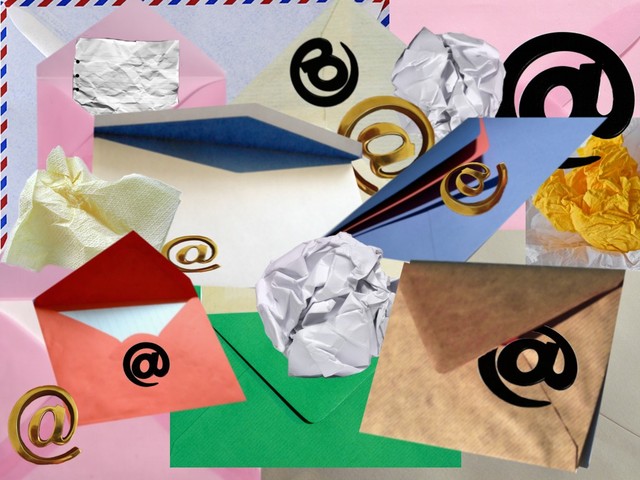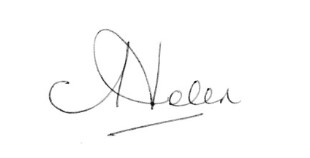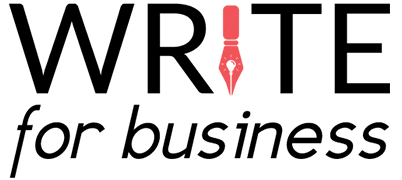How to write emails like a pro (six easy ways)
By Helen McCrone, SEO Copywriter | Word Count 1,069
It's exasperating, isn't it?
You’re busy. Your inbox is overflowing. You’ve trashed the dross. Scanned for deals. Parked the ones from friends.
Now comes the frustrating bit.
Working your way through emails from clients and colleagues.
Deep breath…

Yep, these people do test your patience. They don’t get straight to the point. They cram their email with unrelated topics. The subject line says ‘project deadline’ but they’re waffling on about cost analysis, the next quarterly meeting and customer complaints. And where’s the action point for you? Or is this just for filing in the bin?
Don’t they know how many emails you get each day?
Don’t they realize you’ve got better things to do with your time than decipher their message and work out whether you need to do anything or not?
Don’t you just wish they would write emails like a pro?
Well, maybe you need to show them how it’s done. I’ve gathered a few tips for you that will let you showcase your magnificent communication skills and give your colleagues and clients a great lesson in writing professional emails at the same time.
Please read on…
1. Start strong: write an informative, specific subject line
Don’t let your readers guess what your email is all about. Chances are, if it doesn’t look important or relevant, they’ll park it, ignore it or trash it.
So don’t write ‘Staff meeting’ or even ‘Changes to staff meeting’ when you can write ‘Staff meeting rescheduled to Monday, 15 February’.
You need to motivate the reader to open your email and actually read the content. You can even turn your subject lines into action points where appropriate. Compare ‘Quarterly Report’ with ‘Quarterly Report: review & return by Friday’.
Can you imagine your inbox if all your emails had meaningful subject lines like these? It would be a joy to behold.
2. Give your readers the BLUF: Bottom Line Up Front
When you read an email, do you want to wait until you get to the bottom of the message to find out why you’re being contacted?
Of course not, so don’t make your readers impatient by burying the reason you’re writing in the depths of the email.
Put the most important information at the top of your email. Tell them why you are writing and what you are writing about. Add some background and the importance of your issue if necessary.
In other words, don’t save key info for the middle or end of your message. Your reader may not get there.
3. Help your readers absorb the info: write for scannabilty
This tip follows on from my previous point. Ask yourself this, do you read emails word for word like you would a novel? Or do you read the intros carefully and then scan the rest for the most relevant components?
I bet it’s the second.
Reading an email is like reading a newspaper article. We absorb the first few details, then we pay less and less attention to the rest, skimming over the article, scanning for attention-grabbing points, and then jumping to the conclusion (if we can be bothered).
So help you readers scan your email by using bullet points, section headings, bold text and lots of white space. Avoid long continuous blocks of text. Our eyes find lengthy passages challenging to read on a screen. Limit yourself to an average of two or three sentences per paragraph.
This tip (like all the other tips here) applies equally to your email marketing campaigns.
4. Strike the right tone: don’t be too formal or informal
Emails may be more relaxed in tone than letters, but that doesn’t mean you should write like you’re dropping a note to your best friend to arrange the next girls’ or lads’ night out.
True, we often adopt different styles depending on who we’re writing to and why, and that’s fine. A memo to a colleague will be much less formal than a quote to a customer, for example. But there are limits to this informality in a business context.
So how do you decide which style to adopt? Be guided by the relationship you have with your reader, his or her personality and the email’s subject matter. If you’re writing an apology note, you’d be unwise to come across as chatty and breezy.
No matter the relationship and topic, you should strive to be professional and cordial at all times. Therefore, write whole sentences, use courteous phrases, think about your grammar, and use the spell check. No excuses.
5. Be succinct: write clearly and concisely
Keep your email as short as possible. Give your readers all the relevant information using as few words as possible. Trust me, they’ll more likely to read your emails if you write concisely.
Here’s a few tips on writing succinctly. The sentences in blue are good examples of writing concisely.
Rule
Before
After
Keep active (save the passive for diplomacy, avoiding blame)
The information will be sent by the company on Friday.
We will send you the information on Friday.
Avoid nominalisations (replace abstract nouns with the equivalent verbs)
We had a discussion about the matter.
We discussed the matter.
Cut out useless words (redundant phrases to not add any meaning)
To summarise briefly, we developed several new innovations in a period of six months.
To summarise, we developed several innovations in six months.
Delete unnecessary which’s, that’s
and who’s:
We interviewed three candidates who were all very good.
The three candidates were excellent.
Do not use intensifiers that do not intensify:
The salary increase was quite inadequate.
The client was really organized and extremely helpful.
The figures were very impressive.
The salary increase was inadequate.
The client was organized and helpful.
The figures were impressive.
6. Sign off properly: add an automatic signature
Make you emails more professional looking by adding a custom signature to every email you send. You can add links to your website, LinkedIn page or Facebook page. Why not include a logo or images in addition to the usual contact details?
If you're not sure how to do that, or you'd like to get creative and create an eye-catching signature, check out WiseStamp. This award-winning signature generator allows you to create professional-looking signatures in minutes and works with Gmail, Outlook, Yahoo and MacMail.
So there you have it: six handy tips for making your emails more professional. By setting a good example, your business partners will hopefully follow your lead. If not, just send them a link to this article...
Need help with your marketing emails? Check out my email marketing writing service. An email campaign is still one of the best ways to communicate with your target audience.

